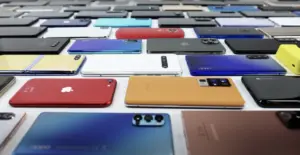Our favorite display benchmark, Dxomark, has revamped its smartphone display testing protocol and launched a new Eye Comfort Label. This development aims to better reflect the evolving technology and user habits in the smartphone industry.

Originally introduced in 2020, Dxomark’s display protocol blends lab assessments with real-life usability tests to gauge the smartphone display quality. The latest revision simplifies the scoring structure, integrating motion analysis directly into the video evaluation and redistributing the artifacts analysis among other attributes.
Key updates include an enhancement in readability testing, which now extends to brighter conditions up to 50,000 lux, using a newly developed dome system. The protocol now tests color accuracy in the devices’ most faithful color modes, shifting away from the default settings to provide more precise results. For video, Dxomark has introduced new HDR targets and included a test environment that mirrors indoor HDR viewing preferences.
In response to growing concerns over the effects of prolonged screen exposure, Dxomark has also introduced the Eye Comfort Label. This label certifies smartphones that pass stringent tests designed to minimize eye strain and other potential negative effects of screen time. The certification involves four key evaluations: Temporal Light Modulation, where devices must exhibit minimal luminance output variation; Brightness Level, requiring smartphones to feature an adaptable brightness setting down to 2 nits; Blue Light Filtering, with a maximum allowed Circadian Action Factor of 0.65 to mitigate melatonin suppression; and Color Consistency, ensuring that devices maintain over 95% of their P3 color space coverage even when blue light filtering is active.

